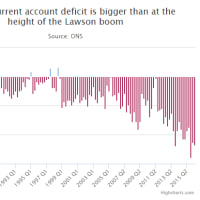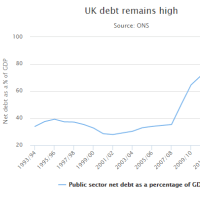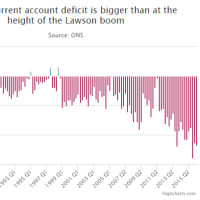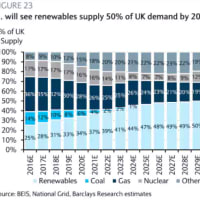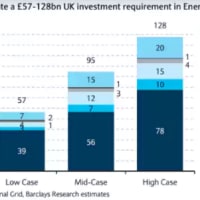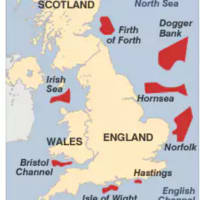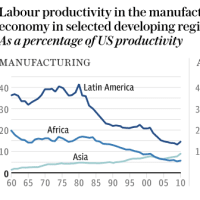JP Morgan sees 'most extreme excess' of global liquidity ever
(JPモルガン、史上「最大の過剰」流動性を確認)
By Ambrose Evans-Pritchard Economics
Telegraph Blog: Last updated: October 29th, 2013


(JPモルガン、史上「最大の過剰」流動性を確認)
By Ambrose Evans-Pritchard Economics
Telegraph Blog: Last updated: October 29th, 2013
http://blogs.telegraph.co.uk/finance/files/2013/10/jp-morgan_2367712b-460x288.jpg
If you think there is far too much money sloshing through the global financial system and causing unstable asset booms, you are not alone.
世界の金融システムに物凄いマネーがあり過ぎ、とか、不安定な資産バブルを作ってるよね、とか思っているのは、あなただけではありません。
A new report by JP Morgan says the bank's measure of excess global money supply has reached an all-time high.
JPモルガンによる最新レポートによれば、同行の過剰グローバル・マネー・サプライの指数が史上最高に達したそうです。
"The current episode of excess liquidity, which began in May 2012, appears to have been the most extreme ever in terms of its magnitude," said the report, written by Nikolaos Panigirtzoglu and Matthew Lehmann from the bank's global asset allocation team.
JPモルガンのグローバル・アセット・アロケーション・チームのNikolaos Panigirtzoglu氏とマシュー・リーマン氏がまとめたレポートは「2012年5月に始まった現在の過剰流動性は、その規模において、史上最大であると思われる」としています。
They said the latest surge is far beyond anything seen in the last three episodes of excess liquidity: 1993-1995, 2001-2006, and during the Lehman emergency response from October 2008 to September 2010, all of which set off a blistering rise in asset prices.
どうやら、この急増は過去3度の過剰流動性で確認された規模を遥かに上回っているようです。
過去3回とは、1993-1995年、2001-2006年、そして2008年10月から2010年9月までのリーマン危機への緊急対応期間のことで、いずれも資産価格を暴騰させました。
This is not a problem right now. The bank says there is enough juice to keep the boom going for several more months, but it stores up bigger problems for later. "It could be a warning if fundamentals are out of whack. Markets could be vulnerable next year if that liquidity starts to disappear," said Mr Panigirtzoglu.
これは今のところ問題ではありません。
同行によれば、あと数ヶ月間ブームを維持するだけの燃料は十分だそうですが、これは後々より大きな問題を蓄積するとのこと。
「ファンダメンタルがやられればワーニングになるだろう。マーケットは来年、流動性がなくなり始めれば、不安定になる可能性がある」とPanigirtzoglu氏は言います。
My own view on all this is somewhat different, so I pass on the report's findings for readers to make their own judgment.
これに関する僕の考えはちょっと違ってますので、判断は読者諸氏にお任せするとして、レポートの中身をお知らせします。
They are argue that the global M2 money supply has risen by $3 trillion this year, up 4.6pc in just nine months to $66 trillion. Roughly $1 trillion is showing up in the G4 bloc of the US, eurozone, Japan, and the UK.
JPモルガンは、世界のM2マネーサプライは今年に入って3兆ドル増加し、僅か9か月間で4.6%増加して66兆ドルに達したと論じています。
米国、ユーロ圏、日本、英国のG4ブロックで、約1兆ドルが増加しました。
The lion's share, some $2 trillion, is showing up in emerging markets where credit continued to surge at $170bn a month in July and August despite the Fed Taper scare earlier that hit the Fragile Five (Brazil, India, Indonesia, South Africa, and Turkey). Mr Panigirtzoglu said there is an internal credit boom in emerging markets that is running in parallel to QE in the West.
その大半、約2兆ドルは、弱小ファイブ(ブラジル、インド、インドネシア、南アフリカ、トルコ)を襲った先のFRBのQE縮小パニックにも拘わらず、7月と8月には月間1,700億ドルも信用を急増させ続けている新興市場で増加しています。
Panigirtzoglu氏によれば、新興市場では西側の量的緩和と並行して進行する域内信用ブームが起こっているそうです。
My guess is that China has accounted for a fair chunk of the latest growth since it has reverted to excess credit yet again, shovelling loans at the state behemoths, hoping to squeeze a lit more juice out of that exhausted catch-up model. I also think that this $2 trillion jump is linked to QE by the Fed, Bank of England, the Bank of Japan, and to the ECB's backdoor support for Club Med bonds. Money has been pushed out into Asia, Latin America, and Africa, but this can be overstated.
僕が思うに、中国は直近の増加の大半を占めているのでしょう。
寿命の尽きたキャッチアップ型モデルからもう少し搾り取ろうと、方針を過剰信用にまた逆転させて、巨大公営企業に貸し出しまくってますからね。
また、この2兆ドルもの急増は、FRB、イングランド銀行、日銀の量的緩和と、ECBによる地中海クラブ債券支えと関連しているのだと思います。
マネーはアジア、南米、アフリカから押し出されていますが、これは言い過ぎかもしれません。
Determining levels of excess money is no easy task. The devil is in the detail. JP Morgan measures "broad liquidity" held by firms, pension funds, households (etc) as well as banks. They say correctly (a crucial point often missed) that QE bond purchases from banks do not necessarily boost the broad money supply. You have to buy outside the banks.
過剰マネーの水準を見極めるのは容易ではありません。
悪魔は細部に潜むのです。
JPモルガンは企業、年金基金、家計(など)、そして銀行が保有する「広義の流動性」を測定しています。
正しくも(見落とされがちな重要ポイントですが)、量的緩和による銀行からの債券購入が必ずしも広義のマネーサプライを増加させることはない、と述べています。
銀行以外から購入しなければならないのです。
In very crude terms, excess liquidity is the gap between "money demand and money supply". When confidence returns, demand for money falls, so it finds a home elsewhere in stocks, property, and such.
非常に大雑把に言うと、過剰流動性というのは「マネーの需給」ギャップなのです。
信頼感が復活すれば、マネー需要は減りますから、株や不動産に流れます。
If JP Morgan is right, you can see why the BIS, the IMF, and Fed hawks are biting their fingernails worrying about the next train wreck. There is clearly a huge problem with the way QE has been conducted.
JPモルガンが正しければ、BIS、IMF、FRBのタカ派が次の列車事故を心配してイライラしている理由がわかるでしょう。
量的緩和の実施の仕方には、明らかに大きな問題があります。
The wash of money has set off another asset boom, yet the world economy has failed to achieve "escape velocity", and is arguably still in a contained depression. Global trade volumes contracted by 0.8pc in August. (It would have been a lot worse without QE of course, though we can never prove it).
大量のマネーは資産バブルを引き起こしました。
が、世界経済はまたもや「脱出速度」に達しませんでした。
また、今も控えめな不況あると言えます。
世界の貿易量は8月は0.8%減少しました。
(量的緩和がなければ勿論もっと酷いことになっていたでしょうが、証明は出来ません。)
If we ever need more QE it should go straight into the veins of the economy by direct deficit financing of big investment projects (fiscal dominance) and damn the torpedoes, and the taboos. Just print money to build houses for the poor, and solve two problems at once. Remember, I said "if", before you Austro-liquidationists and coupon rentiers all scream abuse at once.
これ以上の量的緩和が必要になるとすれば、僕らは赤字財政で大規模な投資プロジェクトをやって(財政優位)、タブーも何もかも知ったことかで、経済の血管に直接働きかけるべきです。
貧困層のために家を建てるために紙幣を増刷するだけで一石二鳥です。
オーストリア学派の清算主義者や不労所得生活者が一斉に罵声を浴びせてくる前に言いますが、僕は「すれば」と書きましたからね。
Interestingly, JP Morgan also said that Norway's sovereign wealth fund ($800bn) stopped buying equities in the third quarter, becoming net sellers.
興味深いことに、JPモルガンは、ノルウェーのSWF(8,000億ドル)は第3四半期に購入を停止して売りに回ったとも述べています。
It is currently 63.6pc invested in equities, above its 60pc target. This implies more selling. Other such funds are likely to be in the same position. Interpret that as you want. Sounds to me like there is now a sovereign wealth fund "call" on global equities markets. They will sell into the rallies.
現在、株式への投資割合は63.6%と、目標の60%を上回っています。
これは更なる売りを意味しています。
他のこの手のファンドも同じポジションにある可能性が高いですね。
どう解釈するかはお任せします。
僕には、SWFは現在、世界の株式市場で「コール」しているように見えます。
値上がりに向けて売りに回ることでしょう。












